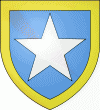Il-Qrendi
 |
 |
Although the majority of the village's old core buildings remain today, Qrendi has changed considerably in recent times. A bypass road has been built to divert through-traffic away from the village, modern suburb developments has been built and an open space with a bus terminus being created in front of the Parish Church by removing the walled grounds from an old villa.
Fossilized remains of animals dating back to the Quaternary Period have been found in the environs of Qrendi. The remains were found in caves and coastal deposits within the Magħlaq Fault or Wied tal-Magħlaq. The caves came to light in 1858, when the area began to be quarried for its hard coralline rock which was used to build the docks in the Grand Harbour.
Studies were then taken up by Commander Thomas Abel Brimage Spratt in 1861, who excavated a site known as Ħalq is-Siġar at Magħlaq and confirmed the presence of a variety of fossilised animal remains, including an abundance of hippopotami bones, evidence of dwarf elephants, giant dormice, weasels, owls, bats and birds, besides many other snail fossils. The discovery further yielded complete skeletons of elephants and a large number of bones pertaining to sea birds.
In around 3600 BC, the temples of Ħaġar Qim and Mnajdra, which are among the oldest freestanding structures in the world, were built in what is now the outskirts of Qrendi. Other ancient sites such as tombs and dolmens have also been found in the limits of Qrendi.
The first known documentation of Qrendi is in the militia list of 1417, when it was a small village of 26 households. During Hospitaller rule, various towers were built in or around Qrendi, while some knights built summer residences in the area. Qrendi became an independent parish in 1618.
In the 19th century, while Malta was a British protectorate, Qrendi was ruled by a magistrate who was known as Luogotenente, and a garden was built in Qrendi for his personal use.
During World War II, a small airstrip known as RAF Krendi was built roughly halfway between the village and Siġġiewi. The airstrip consisted of two tarmac runways, and it saw use during the Allied Invasion of Sicily in 1943. The airstrip closed with the end of the war, and the runways have been converted into roads. A number of Qrendin civilians were killed during the war, and a memorial in their honour was inaugurated in 1995.
The Qrendi Local Council was established by the Local Councils Act of 1993.
Map - Il-Qrendi
Map
Country - Malta
 |
 |
| Flag of Malta | |
Malta has been inhabited since approximately 5900 BC. Its location in the centre of the Mediterranean has historically given it great strategic importance as a naval base, with a succession of powers having contested and ruled the islands, including the Phoenicians and Carthaginians, Romans, Greeks, Arabs, Normans, Aragonese, Knights of St. John, French, and British, amongst others.
Currency / Language
| ISO | Currency | Symbol | Significant figures |
|---|---|---|---|
| EUR | Euro | € | 2 |
| ISO | Language |
|---|---|
| EN | English language |
| MT | Maltese language |
















